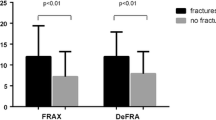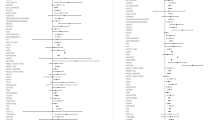Abstract:
Available evidence suggests that fracture prediction with bone densitometry may improve when used on people at high risk of osteoporotic fractures. The objectives of this literature review were: (1) to identify risk factors for fracture that are associated with the development of a low bone mass for both men and women; (2) to describe and assess the relationship between these factors and the risk of fracture; and (3) to classify them according to the strength of their association with fracture incidence. Studies were identified from MEDLINE (1982–1997), HealthSTAR (1975–1997) and The Cochrane Library (1997) databases. Pre-stated inclusion criteria (original analytic studies assessing risk factors for osteoporotic fractures in men and women) and methodologic quality were assessed by two independent investigators. Information on the study design and analysis, characteristics of participants, exposure (risk factor) and outcome measures (relative risk and odds ratios for fracture incidence), control for potential confounding factors and risk estimates was extracted using a standardized protocol. Qualitative and meta-analytic techniques were used for data synthesis. As a result, risk factors were classified into three groups according to their strength of association with fracture: high risk (RR≥2), moderate risk (1<RR<2) and no risk or protective (RR≤1). Of approximately 80 risk factors identified from 94 cohort and 72 case-control studies, 15% were classified in the high-risk group, including low body weight, loss of weight, physical inactivity, the consumption of corticosteroids or anticonvulsants, primary hyperparathyroidism, diabetes mellitus type I, anorexia nervosa, gastrectomy, pernicious anemia, and aging (>70–80 years). Eighteen percent and 8% of risk factors were classified in the moderate and no risk group respectively, whereas 60% showed either a lack of scientific evidence confirming their association with fracture or contradictory results. An efficient strategy for bone densitometry provision may thus be its selective use in those individuals who present with several strong or moderate risk factors for fracture related to bone mass loss.
Similar content being viewed by others
Author information
Authors and Affiliations
Additional information
Received: 28 August 2000 / Accepted: 20 March 2001
Rights and permissions
About this article
Cite this article
Espallargues, M., Sampietro-Colom, L., Estrada, M. et al. Identifying Bone-Mass-Related Risk Factors for Fracture to Guide Bone Densitometry Measurements: A Systematic Review of the Literature . Osteoporos Int 12, 811–822 (2001). https://doi.org/10.1007/s001980170031
Issue Date:
DOI: https://doi.org/10.1007/s001980170031




